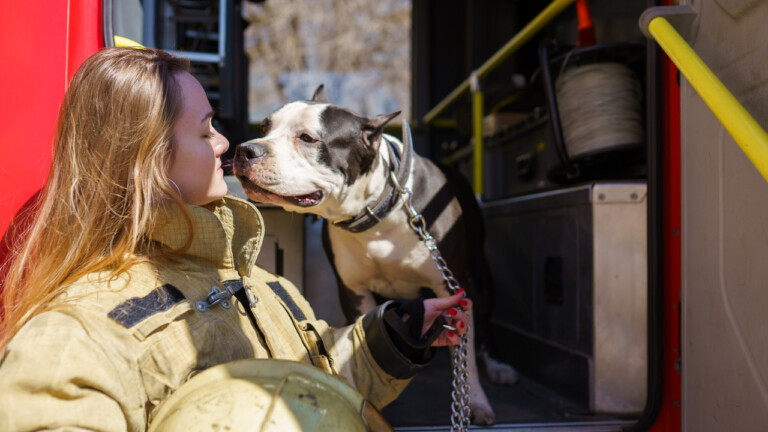What exactly is a spay or neuter?
Spaying and neutering are both sterilization procedures or gonadectomies. This means that we remove the sex organs to prevent unwanted pregnancies as well as certain hormone driven conditions.
In a spay procedure, we’re removing the ovaries and usually the uterus from a female pet.
In a neuter, we’re removing the testicles from a male pet.
What are the benefits of spaying or neutering my pet?
Preventing Pyometra
As many people know, spaying a female pet will prevent unwanted pregnancy, but there’s also a lot of other health benefits to spaying your pet. One of the more life-threatening ones is a condition called pyometra, which is an infection of the uterus.
By spaying your dog, you’re completely eliminating the chance that she can get that type of infection. In dogs, one out of five intact females will have a pyometra by the time she is 10 years old.
Reducing the Risk of Mammary Cancer
Spaying reduces the risk of mammary cancer. 35% of unspayed female dogs will get mammary cancer in their lifetime, and 50% of those dogs will die from the disease.
Spaying your dog before she’s two years old reduces the risk of mammory cancer four times. In cats, spaying before the first heat cycle creates a similar reduction in mammory cancer.
Preventing an Enlarged Prostate
Neutered male dogs are unable to get females pregnant. Neutering your male dog also prevents benign prostatic hyperplasia, which is just a fancy way of saying an enlarged prostate and is caused by excess hormones as the dog ages.
Reducing Unwanted Behaviors
Both spaying and neutering can prevent behaviors such as roaming or urinary marking associated with sexual behavior.
Give Your Pet A Long & Healthy Life
Spaying and neutering your pet can also increase their lifespan. Male dogs who are neutered live an average of 13% longer than their un-neutered counterparts. Female dogs who are spayed live an average of 26% longer than their un-spayed counterparts.
Male cats who are neutered live an average of 62% longer than their un-neutered counterparts and female cats who are spayed live an average of 39% longer than their un-spayed counterparts.
At what age should I spay or neuter my pet?
The recommendation for females is before their first heat, and for males is before they reach sexual maturity.
In cats, this means we usually want to spay or neuter them before four months of age, and in dogs between six and 12 months. This eliminates the risk of unplanned pregnancy and also provides maximum benefit for cancer prevention.
At Emancipet, three pounds and three months old is the youngest and smallest that we will spay or neuter your pet.
Talk to Your Vet If You Have An Older Pet
At Emancipet, any pet over seven is considered geriatric. For these pets, we recommend a one-on-one discussion with your veterinarian about whether spaying or neutering is worth the potential risks of anesthesia at their age. This will depend on whether they’ve been diagnosed with any other disease processes or whether they have any other risk factors for their surgery.
Another great reason to spay or neuter your pet young is that they’ll have smaller blood vessels in their less developed reproductive tract. This means that pets that are spayed or neutered before sexual maturity often have less pain after surgery and a faster healing time, and it’s a much less complicated procedure with fewer risks.
Will spaying or neutering affect my pet’s personality?
The good news is your pet’s basic personality will not change. Immediately after surgery, they may be a little bit more drowsy, groggy, or even a little grumpy from all of the medication they received during their prodecure. However, this usually resolves within about 48 hours.
Some behaviors may change, but these are usually things like marking or roaming – looking for a mate – so they’re not necessarily bad changes. Another important thing to consider is your pet’s food requirements are going to change. After being spayed or neutered, your pet’s calorie intake should decrease by about a quarter.
How long will it take my pet to heal after a spay or neuter surgery?
Most pets are gonna need seven to 10 days of activity restriction, and this usually means wearing a cone or e-collar. The cone of shame shouldn’t be shameful at all. It’s there to protect your pet from licking their incision or pulling out stitches. These things can cause infections or other potentially serious complications.
Everyone has probably experienced a cut that, as it was healing, got really itchy. Even as people who know that we shouldn’t pick scab, sometimes it’s hard to avoid the urge to scratch it. For your dog or cat, they don’t know that they’re not supposed to do that, and so they’re much more likely to traumatize their incision and cause a problem if they’re not wearing a cone.
If you take your pet’s cone off after surgery and they immediately try to lick their incision, that probably means you took it off too early and you should put it back on for a day and then try again to see if they’re ready.
Can my dog or cat be spayed while they’re in heat?
Yes, your pet can be spayed while they’re in heat.
However, some veterinarians may prefer to wait until their heat cycle is over, so it’s best to call and ask your vet clinic before scheduling the procedure.
Are spaying and neutering dangerous surgeries?
Every medical procedure does come with some level of risk. However, these are some of the most commonly performed veterinary surgeries, and so most veterinarians are very comfortable performing them.
The risk of complication from these procedures is very low.
Remember that spaying or neutering your pet is one of the easiest things you can do to help live them a long and healthy life.




